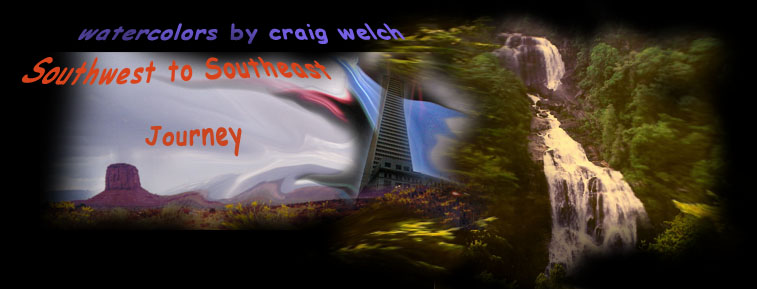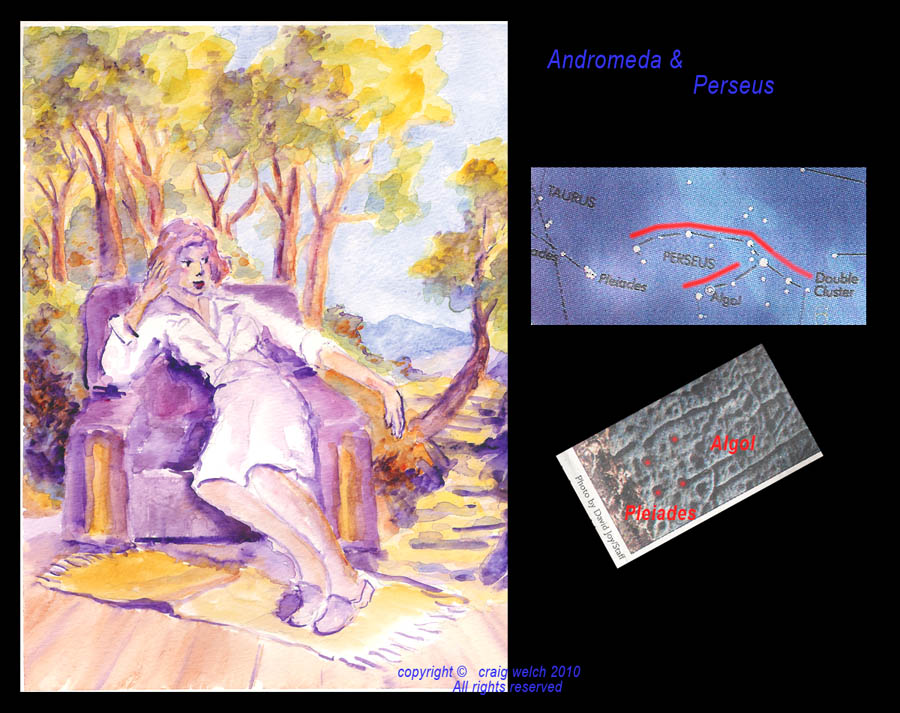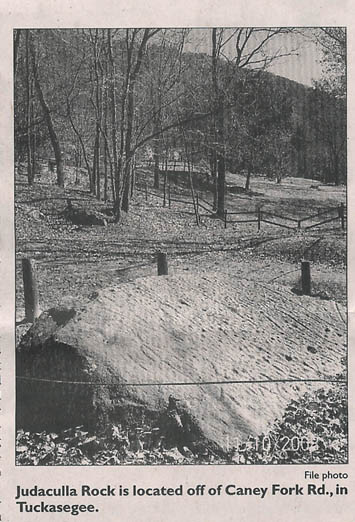|

Christopher Gist making camp in the Ohio Territory in January 1751.
Christopher Gist was commissioned by The Ohio Company in September 1750 to
make an initial survey of the Ohio Territories bounded by the Ohio River.
"You are to go as soon as possible to the Westward of the Great Mountains,
and carry with you such a Number of Men, as You think necessary, in Order
to search out and discover the Lands upon the river Ohio, & other
adjoining Branches of the Mississippi down as low as the great Falls
thereof: You are particularly to observe the Ways & Passes thro all
the Mountains you cross, & take an exact Account of the Soil, Quality,
& Product of the Land, and the Wideness and Deepness of the Rivers,
& the several Falls belonging to them, together with the Courses &
Bearings of the Rivers & Mountains as near as you conveniently can."
His journey in 1750-51 was in the area now known as Kentucky. He kept a detailed
journal which became the property of The Ohio Company and was published in
London in 1776. The following entries for December cover the period
of the Winter Solstice in 1750. These remarks are worth considering
as they are from the earlist 18th century European observations of
the inhabitants of the Ohio. This will help in answering the question
of how calendar systems are understood in various cultures.
From Christopher Gist's journal:
"Friday 14. - Set out W 5 M to Muskingum a Town of the Wyendotts. The Wyendotts
or Little Mingoes are divided between the French and English, one half of them
adhere to the first, and the other half are firmly attached to the latter.
The Town of Muskingum consists of about one hundred Families. When We came
within Sight of the Town, We perceived English Colours hoisted on the King's
House, and at George Croghan's; upon enquiring the Reason I was informed
that the French had lately taken several English Traders, and tha Mr Croghan
had ordered all the White Men to come into this Town, and had sent Expresses
to the Traders of the lower Towns, and among the Pickwelinees; and the
Indians had sent to their People to come to Council about it.
Saturday 15 & Sunday 16 - Nothing remarkable happened.
Monday 17. - Came into Town two Traders belonging to M Croghan, and informed
Us that two of his People were taken by 40 French Men, & twenty French
Indians who carried them with seven Horse Loads of Skins to a new Fort that
the French were building on one of the Branches of Lake Erie.
Tuesday 18. - I acquainted Mr Croghan and Andrew Montour with my Business
with the Indians, & talked much of a Regulation of Trade with which
the they were much pleased, and treated Me very kindly.
From Wednesday 19 to Monday 24. - Nothing remarkable.
Tuesday 25. - This being Christmas Day, I intended to read Prayers, but after
inviting some of the White Men, they informed each other of my Intentions,
and being of several different Persuasions, and few of them inclined to
hear any Good, they refused to come..."
Christopher Gist's journal was written with attention to detail. These passages
cover the period of the Winter Solstice since they cover the calendar days of
Friday December 14 through the beginning of Tuesday December 25. The days which
include the solstice - December 19 to 24 - are noted as "Nothing remarkable."
We might conclude then that within this village of 100 families there was no
celebration of the solstice. What might be inferred from that?

Reading the Lines of History.
Using the 1750-51 journal of Christopher Gist and the records of Julius Caesar as
evidence, what observations can be made regarding calendar systems? In paritcular
what obersvations can be made regarding the equinox and solstice in these two
records? Looking into these two sets of journals, pragmatic but detailed in
their observations, it is possible to draw out some observations that relate
to calendar systems and their usage. This has a direct bearing upon interpreting
the carving of Judaculla Rock.
Christopher Gist records information about the tribes he visits, including notworthy activity
such as an incident of Wyendott justice that resulted in an execution on December 26 of a
prisoner of the Wyendotts. Had there been a celebration of winter solstice, he would surely
have mentioned it. This makes me believe that the Wyendotts did not mark the solstice in
any particular way. A friend from upstate South Carolina pointed out that solstice marking
in the Southeastern forest is uncommon because the forest obscures the observation. The
Cherokee did not record any traditional solstice celebration or observance as far as I can
tell from James Mooney's reports. I have searched the Gist PDF using the online version;
and I found no results for these words: solstice,
equinox, stars. Sun and Moon only yield 'Full Moon' as a time keeping
method; and Sun is used only as a generic formula 'the rising and
setting of the Sun' as a phrase in a treaty.
Looking through Caesar's commentary of 'The Gallic War' I noted the use of the equinox as
a calendar marker only twice; but the two times were both in Britain at the close of
summer when the threat of storms on the ocean crossing to the Continent became of concern
(Book IV v.36 and Book V v.23). I have previously mentioned the first instance. I will
transcribe the second here because it describes the consequences of winter storms during
a Channel crossing.
"But of the ships sent back empty to him from
the Continent - both those which had disembarked
troops on the first journey, and the second fleet which
Labienus had caused to be built, to the number of sixty -
very few made the rendezvous; almost all the
rest were driven back. Caesar waited some time for
these in vain; then, fearing he might be precluded
from sailing by the season, as the equinox was nigh
at hand, he packed the troops of necessity more
closely together; a complete calm ensued, and he
weighed anchor at the beginning of the second
watch, and at dawn touched land and brought all
the ships safely to port."
The marking of the autumnal equinox by Caesar was done for
maritime safety. His time marker was likely not stars but
the Roman calendar, since he kept a daily journal of the
expedition. Christopher Gist's journal is of the same
pragmatic nature; and his daily log is marked by his
English calendar and his journal starts with his departure date.
Not all cultures use daily record keeping calendars such as
used by the Romans and the English (derived from a Roman
calendar). Some cultures use visual references in the sun
and stars. Celts are noted for astronomical based calendars;
and in the Western Hemisphere, Paleoindians of South America
and Uto-Aztecan cultures of Meso-America and the Southwest
are noted for sun and Venus alignment calendars. The sun is the source
of solstice markers since solstice is a Solar-Earth relationship.
Equinox is more frequently based upon stars, because the sun
location at equinox changes quickly on a day to day basis.
Of the stars, in the Northern Hemisphere, The Pleiades is
the most common marker - through all of recorded history
and undoubtedly prior to written records.
The Pleiades
marker on Judaculla Rock then is the key to answering the question:
what culture carved the stone?
Icelanders of 1350 believed there to be Gaelic speaking people south of the failed
Norse Vinland settlement:
"Enn helzt thotti theim, sem their maelti irsku."
("it appeared to them that they spoke Irish")
('Eyrebyggja Saga' transcribed by Valdemar Asmundarson, Reykjavik, 1895, p.166.)
People and events named in Eyrebyggja Saga can be dated to 1029.
|







